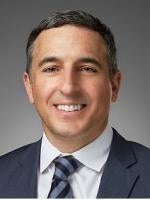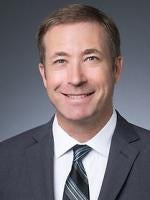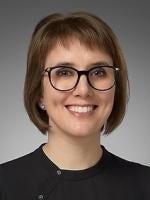Nearly three years ago, the passage of California Bill AB 890, effective January 1, 2023, set in motion a future pathway for qualified nurse practitioners (“NPs”) to practice independently under a new category of licensure. Specifically, AB 890 delineated two potential pathways for California NPs to practice without standardized procedures in certain settings:[1] as “103 NPs” and “104 NPs” (described below). On January 1, 2026, nurse practitioners licensed in California will be eligible for “104 NP” status for the first time. Here, we explore interim legal developments since AB 890 took effect, and discuss how healthcare organizations can incorporate 103 NPs into their existing workforce and strategically prepare for 104 NPs.
Recap of AB 890
Following AB 890, NPs who complete 4,600 hours or three years of full-time clinical practice in the State of California may apply to practice without standardized procedures (“103 NPs”);[2] provided, that the 103 NP’s practice is limited to a group setting with at least one physician.[3] After three years of practicing as a 103 NP, such NPs may apply to practice without standardized procedures, outside of a group setting, but only within the population focus of their qualifying national certification (i.e., family, adult gerontology, neonatal, pediatrics, women’s health, and mental health) (“104 NPs”).[4]While 104 NPs may open their own practices, 104 NPs are still required to consult and collaborate with other healthcare practitioners as appropriate for their patients’ needs, including consulting with physicians when emergent conditions arise.[5]
Interim Legislative Clarifications to AB 890
Since AB 890’s passage, the California legislature and the California Board of Registered Nursing (the “BRN”) have introduced additional flexibility and clarification for 103 and 104 NP certification pathways. Specifically, SB 1451, effective as of January 1, 2025, allows 103 NP applicants to count clinical experience obtained before January 1, 2021 towards the 4,600 hours or three year threshold, and such experience is not limited to a single category in which an NP may practice (as such categories are listed above).[6]
Further, SB 1451 updates patient disclosure requirements such that 103 and 104 NPs are no longer required to (i) verbally inform patients that they are not a physician (i.e., written notice is sufficient), (ii) use the specific phrase “enfermera especializada” when providing notice to Spanish speakers, or (iii) notify the patient that they have a right to see a physician.
Further, under 16 CCR 1482.4, if a 104 NP applicant holds a Doctor of Nursing Practice (“DNP”), then any hours of direct patient care that they performed during the course of their doctoral education are creditable towards the three-year requirement to practice as a 103 NP before applying for 104 NP certification.
Should You Encourage 103 NP Certification Among Your Eligible Workforce?
Expanding the autonomy of 103 NPs can significantly reduce physician oversight burdens and allow for greater flexibility in physician to nurse practitioner staffing ratios. Specifically, while California law restricts each physician to supervising no more than four advanced practice clinicians at a time and in any combination (i.e., PAs, NPs, and clinical nurse midwives), this limit does not apply to 103 and 104 NPs when they are authorized to practice without physician supervision. As a result, organizations may be able to achieve financial and operational efficiencies by encouraging NPs to pursue 103 NP certification (e.g., reduce physician and management oversight time, increase operational flexibility and access to care, increase NP work satisfaction). However, before moving forward, organizations should carefully assess the necessary regulatory and logistical steps and the likely impact on their providers.
For example, an organization should conduct a comprehensive assessment of its organizational structure in order to confirm all requisite steps and any potential obstacles impacting its NPs’ transition to 103 NP practice. This will include evaluating any existing employment agreements or similar contracts, including any service agreements with affiliated entities (e.g., professional services agreements or management services agreements) to confirm any necessary amendments. Further, organizations should understand how reduced physician oversight may impact clinical workflows (including existing NP workflows still subject to standardized procedures), patient assignment protocols, administrative resources, professional liability risk, and leadership structures. Any such changes should also be discussed with an organization’s insurance broker/carriers to ensure appropriate go-forward coverage changes. Finally, if your organization involves a large health system or other multi-entity structure (e.g., 1206(l) foundation and contracted professional corporation), then consider revisiting which entity within your organization employs or engages the NPs to see if you can achieve further efficiencies in contracting, compensation, and benefits, or otherwise streamline oversight procedures.
The organizational assessment should involve a careful, fact-specific assessment of the financial impact of employing 103 NPs, including potential impact to existing billing and reimbursement processes. Because 103 NPs may work without standardized procedures in certain group settings, their services may not always satisfy Medicare’s “incident to” billing requirements, which can vary depending on the specific setting and services in question. When these requirements are not met, organizations must bill under the 103 NP’s own National Provider Identifier (“NPI”), which results in reimbursement at only 85% of the Medicare Physician Fee Schedule for those services, rather than billing under a supervising physician’s NPI at 100% of the Medicare rate. Many commercial payors follow similar reimbursement policies. Given the potential impact on revenue projections, especially for medical groups with high volumes of NP-provided services, it is essential for organizations to carefully weigh these reimbursement factors when considering broader utilization of 103 NPs.
If transitioning to a largely 103 NP workforce would make sense for your organization, the success of that transition will rely heavily on the buy-in and trust that it has built with its NP workforce. Establishing proactive support frameworks can ensure collaboration and minimize any hesitancy on the part of existing NPs to pursue this additional category of licensure. As a result, your organization may want to think beyond simply reimbursing for certification expenses, by also offering time off for studies or exams, offering incentive compensation, and/or involving NPs in early discussions to address any concerns (e.g., scope of practice, professional liability concerns) while continuing to solicit feedback as the process unfolds.
Starting In 2026, Would Your Organization Work With 104 NPs?
2026 is fast approaching, along with the advent of 104 NPs and the opportunity for them to establish their own practices. Forward-thinking healthcare organizations are already considering whether they may want to partner with 104 NPs (e.g., by establishing clinic locations staffed solely with 104 NPs). Because this provider type marks uncharted territory, thoughtful legal structuring, contract negotiation, and risk assessment and allocation will be key for these relationships. Any alignment between the organization and a 104 NP practice should be structured to reflect the distinctive nature of the partnership, including ensuring that contracts between the parties address regulatory concerns specific to 104 NPs, anticipating the risks involved in working with a new and evolving provider type, complying with applicable fraud and abuse laws, and clearly outlining expectations and responsibilities to mitigate any uncertainties arising from this type of early partnership.
Conclusion
The 103 and 104 NP certification pathways under AB 890 have introduced transformative opportunities for NPs in California. As evident by the continued legislative and regulatory attention, these pathways continue to be a valuable tool for California to improve access to care and address practitioner shortages. By addressing operational, contractual, and compliance challenges head-on, healthcare organizations can confidently position themselves to explore these opportunities at the forefront of this evolving landscape.
FOOTNOTES
[1] AB 890, 2019-2020 Reg. Sess., 2020. (Cal.).
[2] In California, standardized procedures are formal written protocols jointly developed by physicians and NPs to legally define the NP’s scope of practice. Broadly speaking, these protocols specify which medical functions NPs may perform independently, outline the requirements for physician supervision, and provide detailed, step-by-step guidance for recurrent patient care activities.
[3] Cal. BPC Section 2837.103.
[4] Cal. BPC Section 2837.104.
[5] Cal. BPC Section 2837.104 (c).
[6] SB 1451, 2023-2024 Reg. Sess., 2024. (Cal.).






 />i
/>i

